Affiliate disclosure: This post may contain affiliate links. Please see our Privacy Policy.
Walking through the farmers market, I can’t help but ogle the tiny baskets of cucamelons on display. I know, that’s the point, a unique and truly adorable vegetable right out front that draws you into the stand. Cucamelons (also known as mouse melons and Mexican sour jerkins) are more than just a cute farmers market novelty. These tiny mouse melons are truly delicious, with a flavor like fresh cucumber mixed with a hint of lime. Since they can be popped into your mouth on a walk through the garden, growing cucamelons is a really rewarding use of garden space.
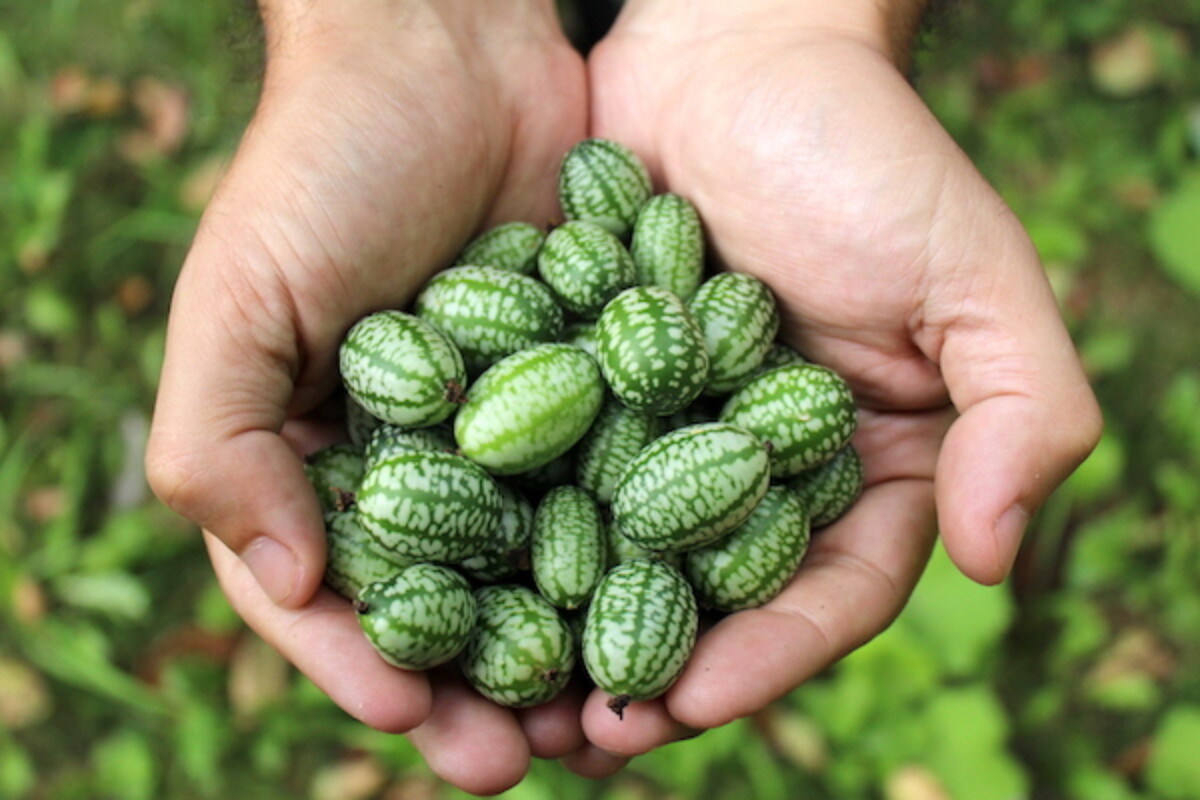
What are Cucuamelons?
At first glance, cucamelons look like miniature 1” watermelons. The name suggests that they’re a cross between a cucumber and a melon, only in miniature. While cucumbers and melons can cross-pollinate, cucmelons are a different crop altogether.
Botanically, cucamelons are neither cucumber nor a melon, and the plants will not cross-pollinate with either. They’re in the cucumber family, but they’re a different species altogether (Melothria scabra).
Cucuamelons are nothing new, they’ve been grown in Mexico and Central America since before European colonization. In their native land, they’re known as pepquinos (little cucumbers) or sandiita (little watermelons). These days, they also go by the names mouse melon, Mexican sour gherkin, Mexican miniature watermelon or Mexican sour cucumber.
How do Cucamelons Taste?
Though one of their names is “Mexican sour cucumber” I wouldn’t call them sour. Cucamelons taste like a fresh, crisp cucumber that has been kissed with a hint of lime. That mild citrus acidity helps make these miniature mouse melons extra refreshing in the summertime.
While you might imagine that these little watermelon looking fruits might have red flesh inside, they actually just cucumbers inside, with tiny seeds and cucumber like flesh.
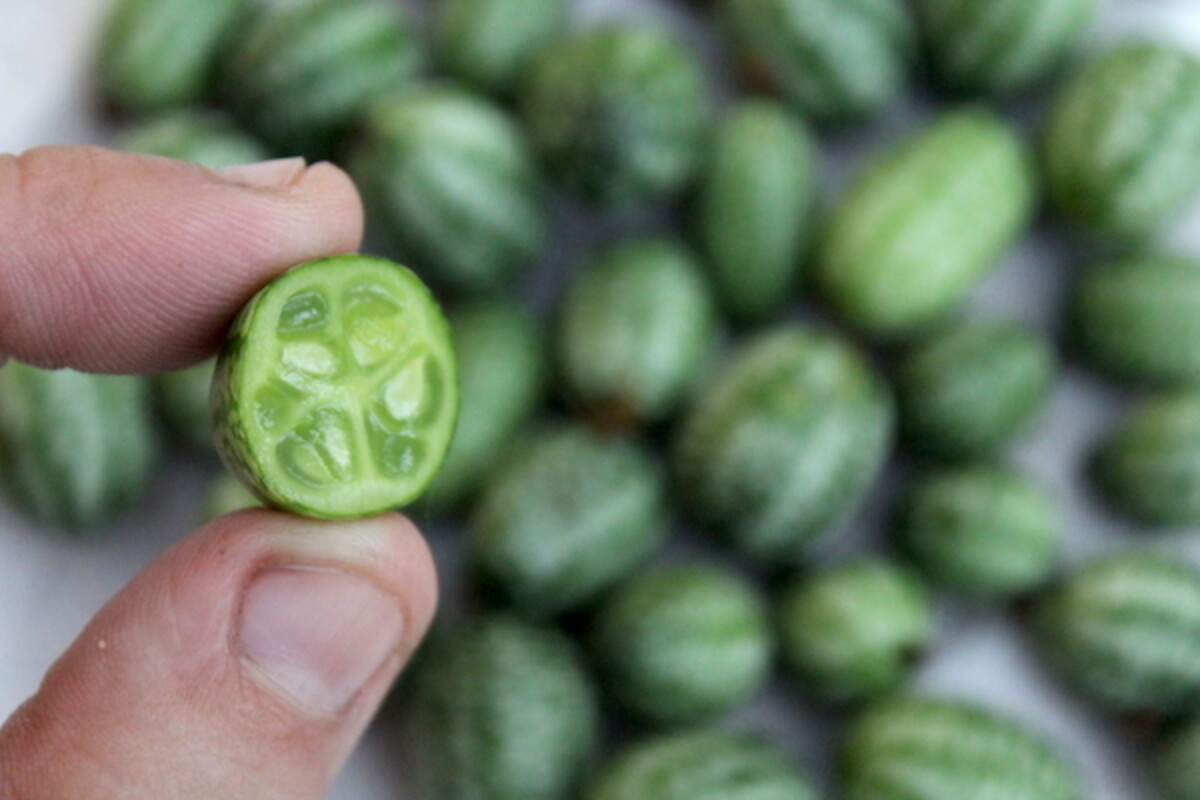
How to Grow Cucamelons
Though they start out as slow growing, delicate seedlings, cucamelon plants will eventually grow to be huge sprawling vines. They thrive on full sun and hot soils, and in the heat of summer the vines will take over a huge vertical trellis.
Starting Cucamelon Seeds Indoors
Start cucamelon seeds indoors about 4 weeks before the last frost date. This is the same time you start cucumbers from seed, and it’s well after other crops like tomatoes and peppers. Members of the cucumber family don’t transplant well once they’re older, so while it’s important to help cucamelons get a good early start, don’t get carried away.
Cucamelon seeds should be planted about 1/4 to 1/2 inch deep and take about 7 to 14 days to germinate, depending on temperature. Ideally, they’d be germinated with warm soil, somewhere between 70 and 75 degrees F. A seedling heat mat can ensure success if your seed starting area is cool or drafty.
In the warmest areas, you can direct seed cucamelons outdoors, but soil temperatures need to be above 70 degrees before planting. Outdoor seed starting is only really viable in areas where cucamelons can be grown as perennials, zones 7 through 10.
Transplanting Cucamelon Plants
Cucamelon plants can be hardened off outdoors after the risk of last frost has passed. After a few days getting used to the sun and air outdoors, transplant the young seedlings to well-drained garden soil.
The seedlings may be small, and the vines spindly, but they’ll really take off when things heat up mid-summer. Be sure to plant the young cucamelon seedlings 12 inches apart, and give them a tall trellis to climb. The trellis ensures that the plants get good sunlight all around, helps keep soil temperatures warm and makes the cucamelons much easier to pick.
In areas with long summers, cucamelon vines can grow 10+ feet tall, so give them plenty of vertical space.
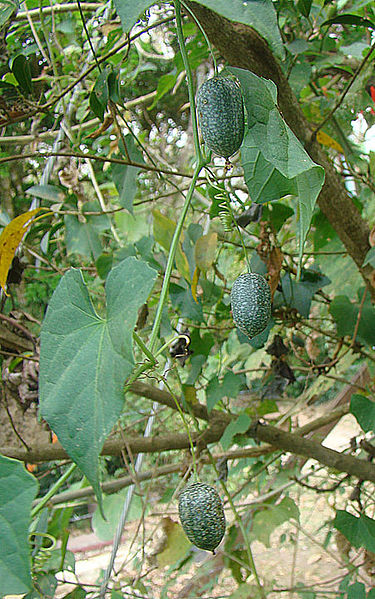
Growing Cucamelon Plants
Once the plants are in the garden, they’re pretty low maintenance. Cucamelons are classed as light to medium feeders, and they don’t require supplemental fertilizer (except in the worst soils).
Cucamelons store energy in tubers under the soil (more on that later) and those tubers require good drainage or they’ll rot in the ground. Avoid planting cucamelons in overly wet soils. Some guides even suggest adding perlite or sand to the garden soil around cucamelons, to ensure good drainage.
Generally, cucamelons don’t require much supplemental water, but they do appreciate roughly 1” of water per week during the growing season. In extremely hot dry areas, mulch them to help maintain adequate soil moisture and water as necessary.
Cucamelon Days to Maturity
Since cucamelons are open pollinated, there’s a bit of variation in days to maturity. In general, cucamelon plants are 65 to 75 days to maturity, provided they’re grown in warm soil with strong, full sun.
While cucamelons grow best in areas with hot, relatively dry summers, they’re adaptable. The plants are commonly grown as a farmer’s market crop in the northeast, which often has cool, rainy summers. Yields may be a bit lower and plants may take a bit longer to mature, but you’ll still bring in a respectable harvest.
In the coldest areas, it’s best to grow cucamelons as tender perennial tubers, by harvesting the underground tubers at the end of the growing season and replanting them in spring.
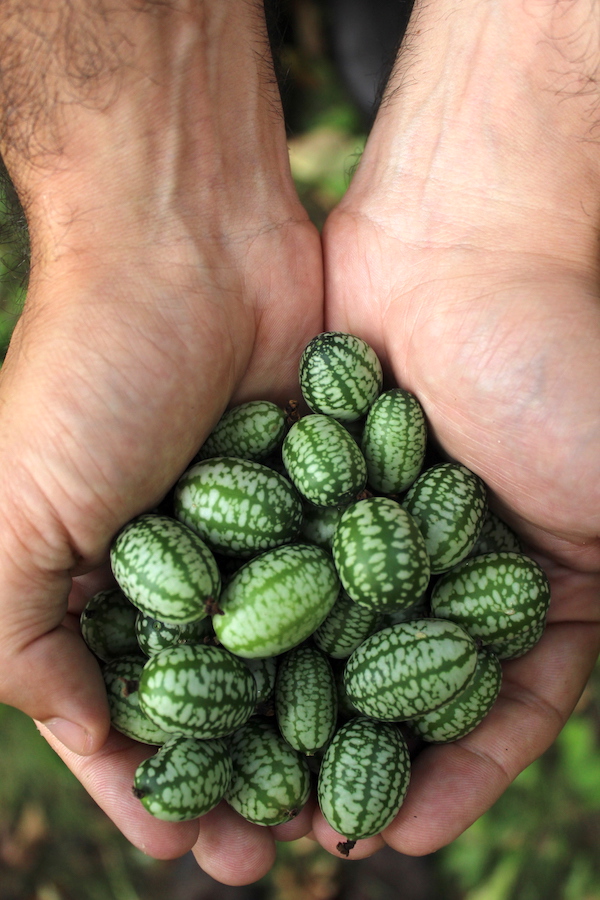
Growing Cucamelons as Perennials
Believe it or not, cucuamelon plants are actually perennials. Below the soil, each cucamelon plant produces a tuber. While the plants are slow to start from seed, cucamelon plants grown from tubers have a head start on the growing season.
The trick is, cucamelon plants cannot tolerate cold winter temperatures, and the tubers are only hardy outdoors year-round to zone 7. In zones 7 to 10, mulch the plants during winter, and they’ll go dormant and come back in the same spot the following year.
Even in colder climates, cucamelons can be grown as a perennial with a few modifications. Cut off the vining tops after the first few fall frosts, when the plants begin to die back on their own.
Carefully dig up the cucamelon tubers, taking care not to bruise or damage them. Each plant should have produced several 4 to 6 inch warty tubers. Don’t dust the dirt off because the tubers need to be stored in soil during the winter months anyway.
Place the tubers in a bucket or pot, filled with moist (but not soaking) potting soil. You can bury them in layers to save space, but make sure there is at least 2 inches of soil above and below each tuber, and ensure they don’t touch.
Store the cucamelon tubers in soil in a cool but frost-free location for the winter. A root cellar, basement or unheated garage should be just right in most locations.
In the spring, pot up the cucamelon tubers about 6 to 8 weeks before the last frost. This should be right about when you start tomato seedlings. Allow the plants to begin growing, then once the last frost has passed, harden off the seedlings outdoors before planting them in the garden.
Here’s a great article on overwintering cucamelon tubers (with pictures) if you need more information.
Growing Cucamelons in Containers
Containers are another good option for cold climates or small space gardeners. Cucamelons take well to container growing, and in cold areas, the whole container can be brought indoors after the first few frosts. The pot should be stored in a cool, unheated space until the next growing season.
Cucamelons are also a great option for patio or patio gardeners. Just be sure to give each plant about 1 foot apart in a container. That means you’ll need relatively large containers to grow multiple plants, and most small pots can only support a single plant.
Give them a good trellis and watch them grow!
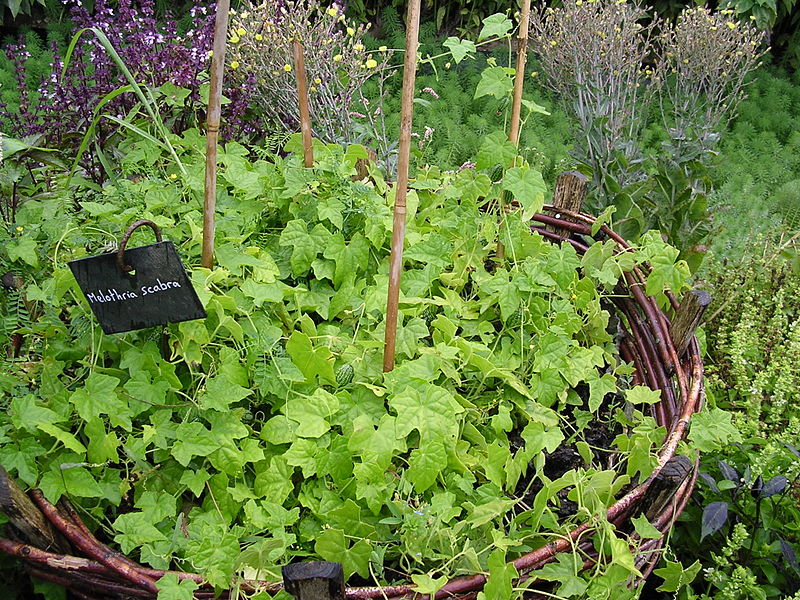
Cucamelon Plant Pollination
A quick note on cucamelon pollination…
Like other members of the cucumber family, cucamelons produce separate male and female flowers. They’re insect pollinated, most commonly by bees. Cucumbers, melons, and cucamelons are all at risk as pollinator populations decline.
To ensure good pollination, plant other bee food sources in the area, and consider hand pollination if your area is particularly short on natural pollinators. Male blossoms grow on long stems, while female blossoms have a small immature fruit attached to their base. Take a small paint brush or Q tip, tip it into a male flower and then hand pollinate individual female flowers.
This can be tedious and time-consuming, especially for fruit as small as little mouse melons. It’s easier to just take steps to ensure healthy pollinator populations in your area.
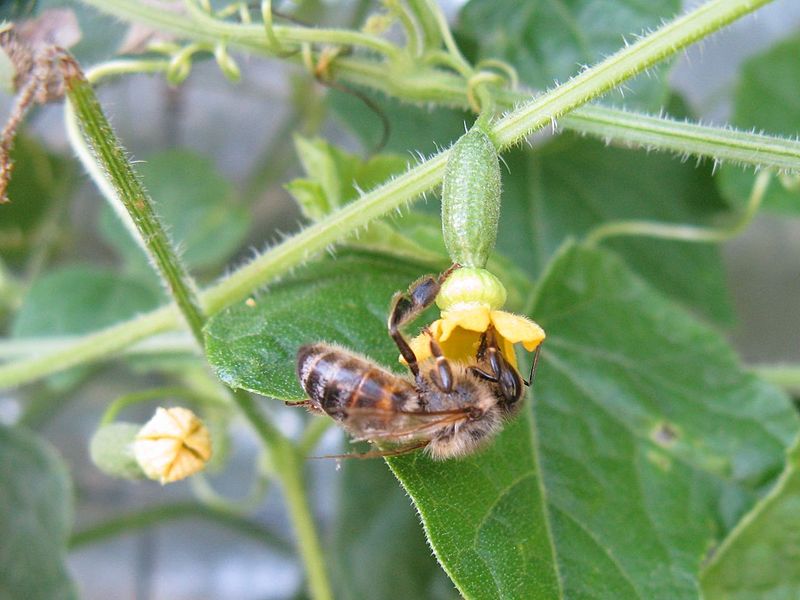
Where to Buy Cucamelon Seeds
While cucumber and melon seeds are commonly available from garden centers as small seedlings, cucamelons are a bit harder to find. For the most part, if you want to grow cucamelons you’re going to have to start them from seed. Once someone in your area is growing them, you can ask them for a spare tuber, but lacking that, seeds are the way to go.
Since cucamelons are a still a relatively rare crop, you’re unlikely to find seeds even in a well-stocked garden center. There are many seed catalogs that carry the seeds, and often you can order them alongside your other garden seeds from your preferred supplier.
Cucamelon seeds are available from Seed Needs, David’s Garden Seeds and Botanical Interests. At the time of this writing, they’re well reviewed with reports of excellent germination rates.
How to Harvest & Store Cucamelons
Harvesting cucamelons is just like picking a cucumber from the vine. They pop off easily, and you can easily harvest a bucket full in a short time. Once cucamelons are harvested, they actually store pretty well. The fruits are remarkably robust for their size, and they don’t bruise easily.
Cucamelons will keep for a long time at room temperature, but eventually, they’ll dry out and begin to shrivel. At that point, they’re still tasty, but they’ve lost their crunch. Once they’re past prime and a bit soft, cucamelons are still wonderfully infused in a bit of liqueur, where they impart their distinctive cucumber/lime taste.
I love making cucamelon gin because cucumber and lime are the perfect compliments to gin already.
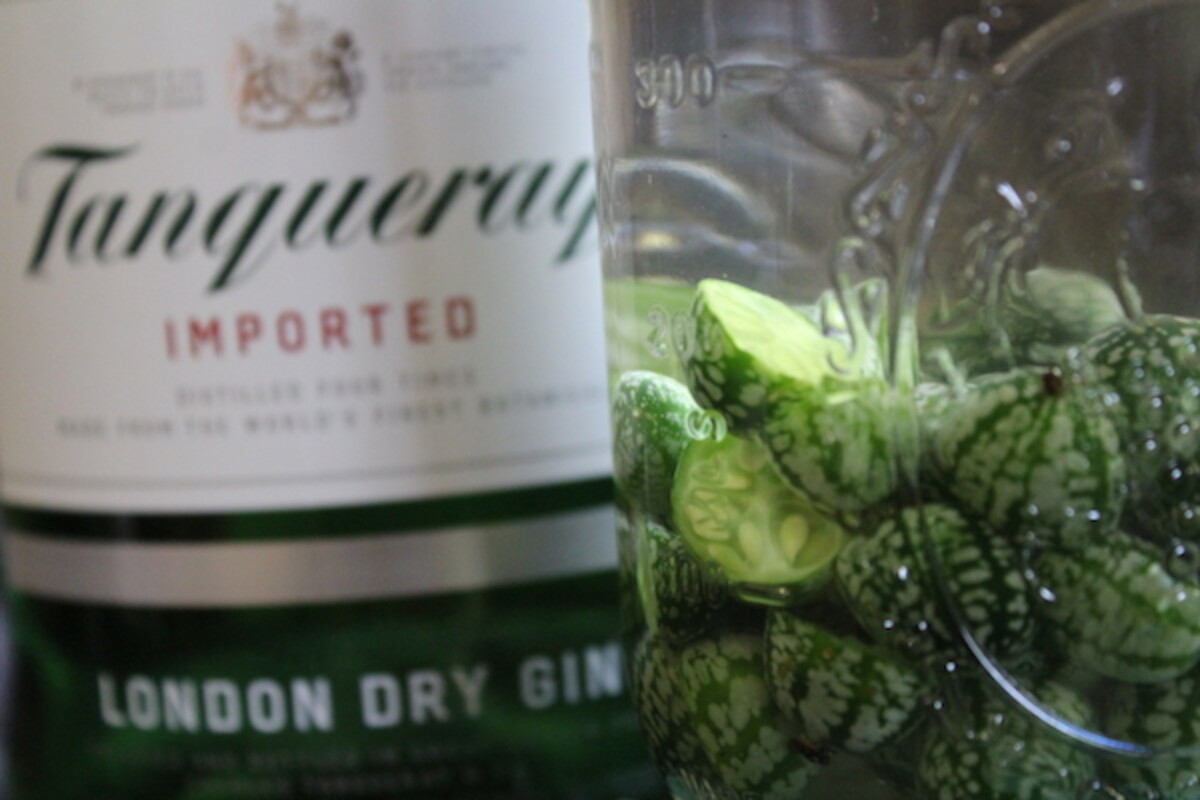
How to Use Cucamelons
Beyond cucamelon gin, which is delicious, there are plenty of healthy ways to use cucamelons. They hold up remarkably well to quick cooking, and they add a lovely crunch to stir-fries if added in the last minute of cooking. That said, they’re usually eaten fresh.
Since they’re a close cucumber relative, it makes sense to turn them into homemade pickles. You can use a regular dill pickle recipe for canning, or a quick refrigerator pickle recipe and substitute cucamelons in place of pickling cukes.
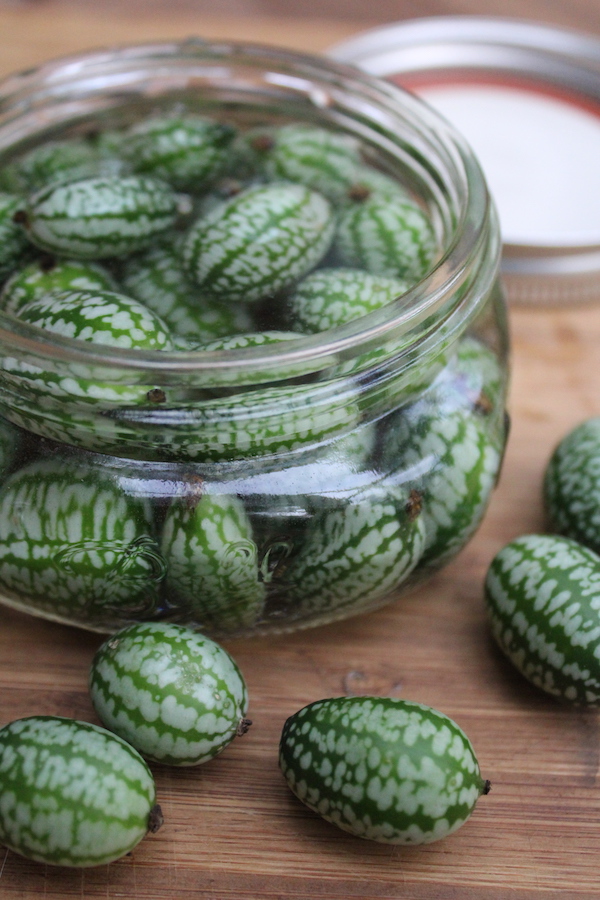
Beyond pickles and popping them in your mouth right in the garden, here’s a few cucamelon recipes to get you started:
- Cucamelon Salsa
- Marinated Cucamelon Salad
- Cucamelon Sunomono (Japanese noodles w/ cucamelon)
- Cucamelon Bruschetta
Feeling inspired? How do you plan to use your cucamelon harvest? Leave me a note in the comments.
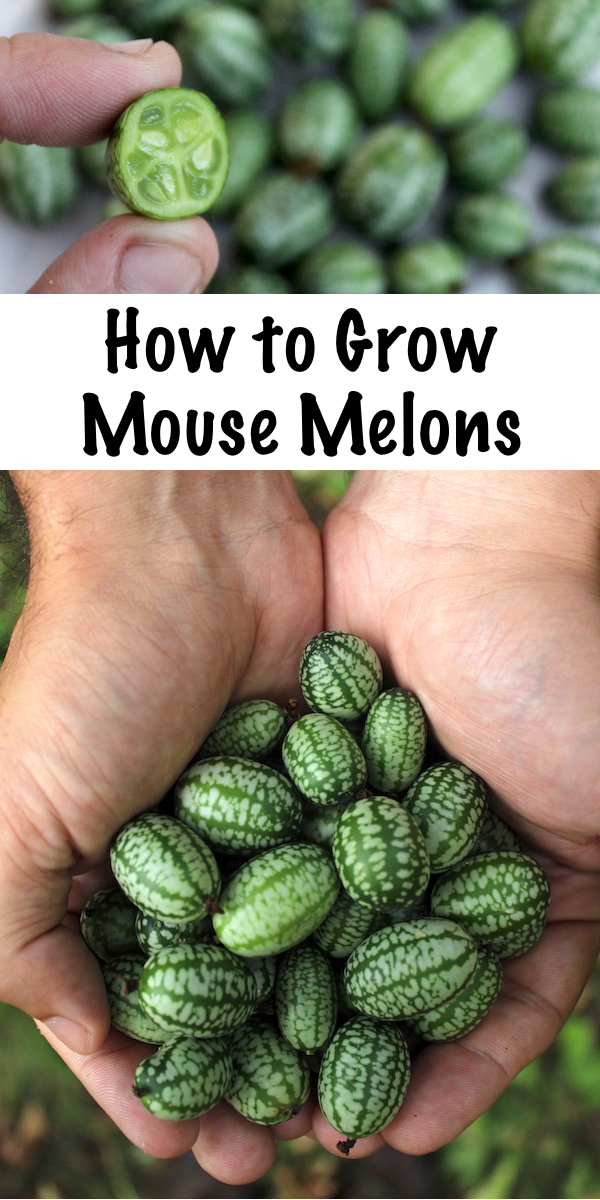
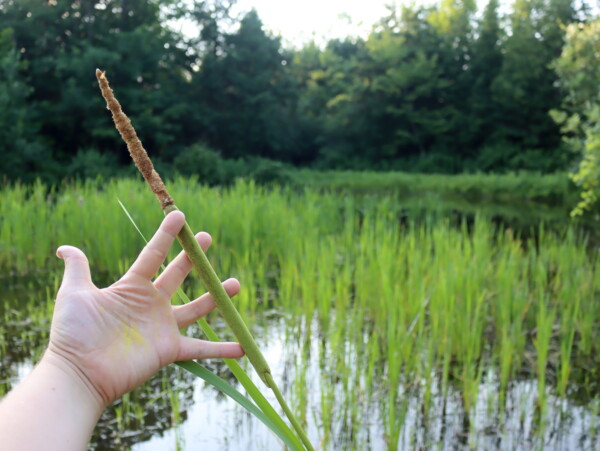
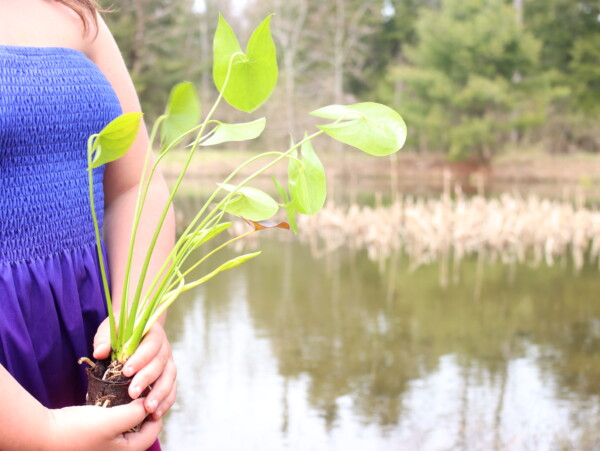
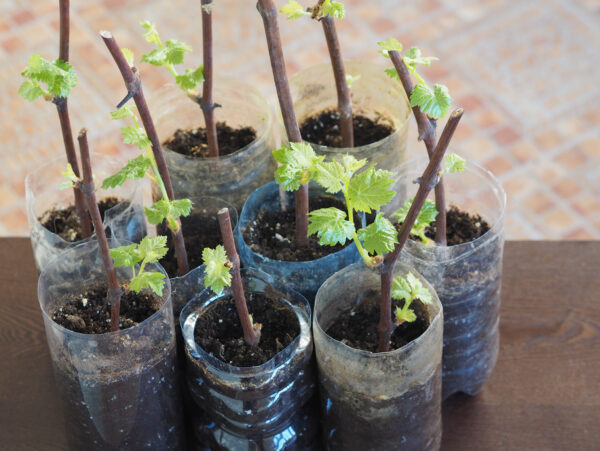
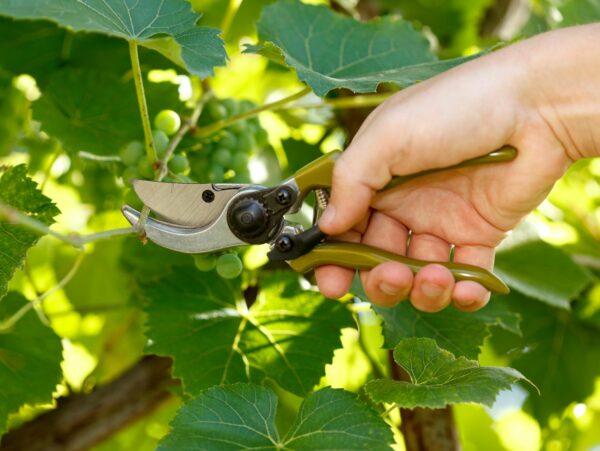










I bought a cucamelon plant at the MSU Plant Sale this past spring and that thing has gone insane! I planted it in my tiny garden bordered by cinderblocks and it’s climbing up the entire side of our house. I haven’t harvested any, although they seem to be getting close, and can’t wait to try this veg. Thank you for all your tips, I hope to save some tubers for next year and if I do, I’m definitely building a trellis. Can’t wait to try your recipes with them, esp the refrigerator pickles.
You’re very welcome. Enjoy these fun little veggies.
Thank you for this information! I got a seed pack from TJMaxx that said “mini melons.” I wrongly assumed that that meant a miniature sized plant, haha. I’m getting my first harvests and I’m so glad I stumbled across this happy little plant.
You’re very welcome. What a wonderful surprise.
i read that these cucamelons (mouse melons can be quite toxic.. what gives ??
I haven’t ever heard that before. Do you have a link to an article with this information?